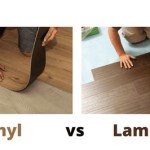How Much Does Floor Tile Installation Cost Per Square Foot?
Determining the cost of floor tile installation per square foot requires consideration of numerous factors. The final price can vary significantly based on the type of tile chosen, the complexity of the installation, the condition of the subfloor, and regional labor rates. This article aims to provide a comprehensive overview of the costs associated with floor tile installation, helping homeowners understand the potential expenses involved in their tiling projects.
Generally, the cost of floor tile installation is broken down into two primary components: the cost of the materials (the tiles themselves, grout, mortar, etc.) and the cost of labor. Each of these components can fluctuate considerably, impacting the overall cost per square foot.
Tile Material Costs
The type of tile selected has a substantial impact on the overall cost. Tile materials range from relatively inexpensive ceramic and porcelain to more costly natural stone options like granite, marble, and slate. Beyond the material, size and design also play a significant role in pricing.
Ceramic Tile: Ceramic tile is generally considered the most affordable option. Prices typically range from $0.50 to $5 per square foot. This affordability makes it a popular choice for budget-conscious homeowners. Ceramic tiles are durable, water-resistant, and come in a wide variety of styles and colors, making them suitable for various rooms, including bathrooms, kitchens, and entryways.
Porcelain Tile: Porcelain tile is denser and more durable than ceramic, making it a better choice for high-traffic areas. It is also more resistant to moisture and staining. The cost of porcelain tile typically ranges from $2 to $10 per square foot. Due to its durability and resistance to wear, porcelain is commonly used in both residential and commercial settings.
Natural Stone Tile: Natural stone tiles, such as granite, marble, and travertine, offer a luxurious and unique aesthetic. However, they are also significantly more expensive than ceramic or porcelain. Prices can range from $5 to $50 or more per square foot, depending on the specific type of stone, its rarity, and its quality. Natural stone requires regular sealing to protect it from stains and moisture.
Glass Tile: Glass tile is known for its vibrant colors and reflective properties. It’s often used as an accent material in backsplashes or bathrooms. Glass tile can be more expensive than ceramic or porcelain, generally ranging from $8 to $30 per square foot. Its unique appearance and ability to create a visually stunning effect contribute to its higher cost.
Other Materials: Beyond these common tile types, there are other options like concrete, metal, and mosaic tiles, each with its own pricing structure. Mosaic tiles, which consist of small pieces arranged in a pattern, can be particularly labor-intensive to install and therefore have a higher installation cost. Concrete tiles offer a modern, industrial look and can vary widely in price depending on their manufacturing process and finish.
In addition to the tiles themselves, other material costs must be considered. These include mortar, grout, sealant, and underlayment materials. The quality and type of these materials will also influence the overall expense. For example, using epoxy grout rather than cement-based grout will increase the material cost but provide greater durability and stain resistance.
Labor Costs for Tile Installation
Labor costs are a significant factor in the overall price of tile installation. These costs are influenced by variables such as the complexity of the installation, the size of the area to be tiled, the location of the project, and the experience and reputation of the installer.
Complexity of the Installation: Intricate patterns, custom cuts, and the installation of mosaic tiles or borders will increase labor costs. Diagonal layouts, for example, require more cutting and fitting, resulting in higher labor hours. Similarly, intricate patterns created with different tile sizes and colors also demand more time and expertise.
Size of the Area: While a larger area may seem like it would automatically increase the overall labor cost, the cost per square foot may decrease slightly for larger projects. This is because installers can often achieve greater efficiency on larger, simpler installations compared to smaller, more complex ones. However, the total labor cost will still be higher for a larger area.
Location of the Project: Labor rates vary significantly by geographic location. Areas with a higher cost of living generally have higher labor rates. Urban areas tend to be more expensive than rural areas. It's essential to obtain quotes from multiple local installers to get an accurate understanding of the prevailing labor rates in your area.
Experience and Reputation of the Installer: Experienced and highly-rated installers typically charge more for their services. However, their expertise can ensure a high-quality installation, minimizing the risk of future problems such as cracked tiles or uneven surfaces. Choosing a licensed and insured installer provides added protection and peace of mind.
Subfloor Preparation: The condition of the subfloor significantly impacts labor costs. If the subfloor is uneven, damaged, or requires repair, additional labor will be needed to prepare it properly. This may involve leveling the subfloor with self-leveling compound or replacing damaged sections. Proper subfloor preparation is crucial for ensuring a successful and long-lasting tile installation.
Generally, labor costs for tile installation range from $4 to $15 per square foot or more. This range can fluctuate based on the factors mentioned above. It's important to get detailed quotes from multiple installers that break down the labor costs and material costs separately.
Additional Cost Considerations
Beyond the cost of tile and labor, several other factors can influence the overall price of a tile installation project. These additional costs should be considered when budgeting for the project.
Subfloor Preparation: As noted earlier, subfloor preparation can add significantly to the cost. The subfloor must be clean, level, and structurally sound before tile installation can begin. If the existing subfloor is damaged or uneven, it may need to be repaired or replaced. Costs for subfloor preparation can range from $1 to $5 per square foot, depending on the extent of the work required.
Removal of Existing Flooring: If existing flooring needs to be removed before tile can be installed, this will incur an additional cost. The cost of removing existing flooring can vary depending on the type of flooring and the difficulty of the removal process. For example, removing old tile can be more challenging and time-consuming than removing carpet. Costs for flooring removal can range from $1 to $3 per square foot.
Grout Sealing: Grout sealing is an important step in protecting the grout from stains and moisture. While some grout types are pre-sealed, others require a separate sealant application. The cost of grout sealing can range from $0.50 to $1 per square foot.
Trim and Edging: Installing trim and edging around the perimeter of the tiled area adds a finished look and protects the edges of the tiles. The cost of trim and edging can vary depending on the type of material used and the complexity of the installation. Options include metal, plastic, and wood trim. Expect to spend anywhere from $3-$10 or more per linear foot for materials and labor.
Disposal Fees: Disposing of old flooring and construction debris can also incur a cost. Some contractors include disposal fees in their overall price, while others charge them separately. Be sure to clarify whether disposal fees are included in the quote.
Unexpected Issues: It's always wise to budget for unexpected issues that may arise during the installation process. For example, hidden plumbing or electrical issues may be discovered when removing old flooring. Having a contingency fund can help cover these unexpected expenses.
Project Size and Scope: The size of the project can influence the overall cost. Larger projects may benefit from economies of scale, resulting in a lower cost per square foot. However, smaller projects may have higher per-square-foot costs due to fixed overhead expenses.
To get an accurate estimate of the total cost of a tile installation project, it's crucial to obtain multiple quotes from qualified installers. These quotes should include a detailed breakdown of all costs, including materials, labor, subfloor preparation, removal of existing flooring, and any other applicable fees. By carefully considering all of these factors, homeowners can make informed decisions and budget effectively for their tile installation projects.
Ultimately, the cost of floor tile installation per square foot is a multifaceted calculation influenced by tile selection, labor expenses, and supplementary considerations. Thorough planning and acquiring detailed estimates are essential steps for securing a fair price and ensuring a successful project.

Ceramic Tile Flooring Installation Cost Fixr

Ceramic Tile Flooring Installation Cost Fixr

How Much Does Tile Installation Cost 2025 Guide

What Is The Average Cost To Install Tile Floors Rubi Blog Usa

How Much Does Tile Installation Cost Per Square Foot Pro

Ceramic Tile Flooring Installation Cost Fixr

Floor Tiling Cost Guide 2025 How Much Does

Ceramic Tile Flooring Installation Cost Fixr

Cost To Install Vct Tile S Fixr

How Much Does Tile Installation Cost 2025 Guide
See Also







